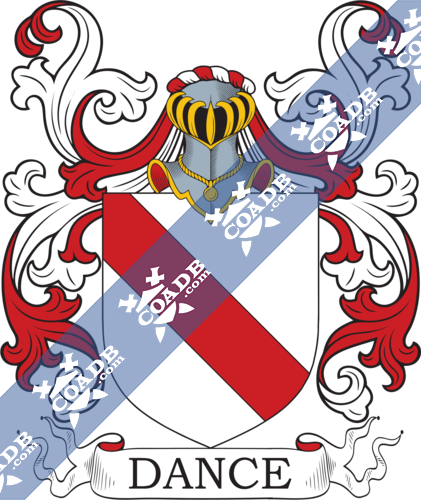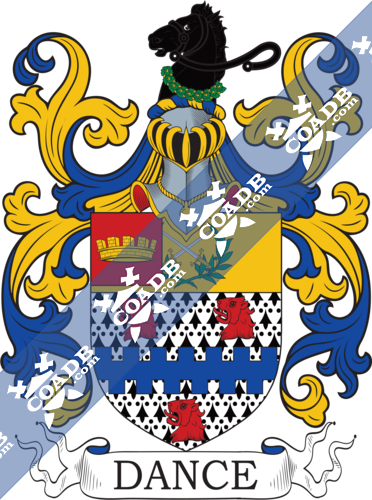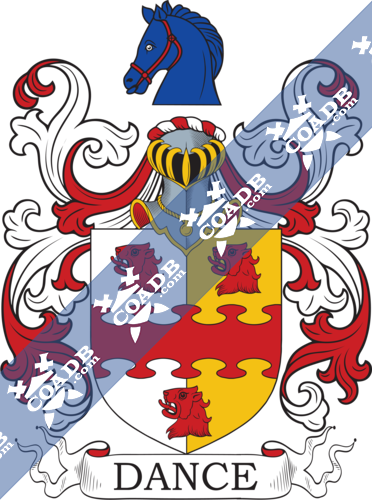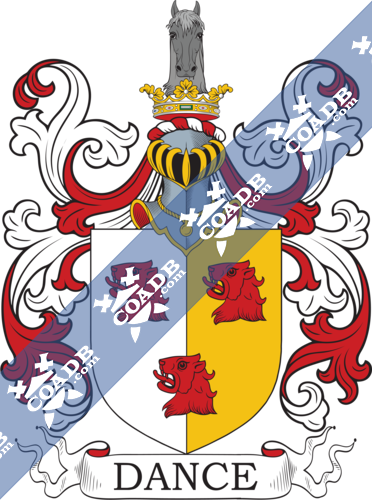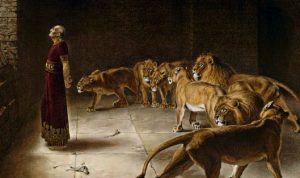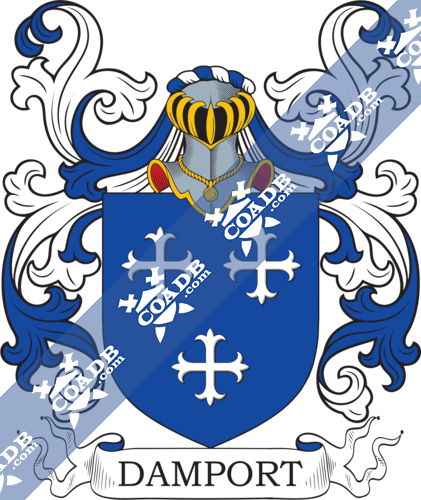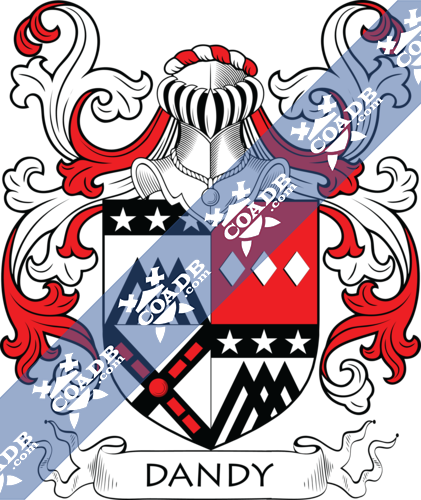Dance Family Crest, Coat of Arms and Name History

Dance Coat of Arms Gallery
Don’t know which Coat of Arms is yours?
We can do a genealogical research. Find out the exact history of your family!
Learn MoreThis surname is a baptismal name meaning “the son of Daniel”. The patronymic Dans was later corrupted to Dance (in the same manner Evance became Evans). Another author claims it is doubtlessly the same surname as Dence or Dench, from the Anglo-Saxon word Danisca or Densica, meaning a Dane or someone from Denmark. Yet another source claims it derives from the old French word dance, which in turn was derived from the German word tanzer, and may be an occupational name for a person who earned a living dancing at fairs, weddings, and festivals.
Early people bearing this last name include Amicia Daunce, Thomas Danase, and Willelmus Daunse, who were recorded in the Poll Tax of Yorkshire in 1379 AD. Another early person with this surname was Robert de la Daunce, who was recorded in the Subsiidy Rolls in Yorkshire county in 1301 AD. Early marriage involving this surname include Giles Dance to Sarah Brett at St. Antholin in London in 1722 AD.
In the Chapter titled Of Other Surnames Originally Sobriquets, in his book English Surnames, Mar Antony Lower, states “A great proportion of nearly all the preceding classes of Surnames were in their primary application merely nicknames or sobriquets; but there are many others which do not admit of classification with any of the kinds already reviewed. I shall proceed to give a few of these, with their probable derivations. “Some seem to have been imposed on account of peculiarities of gait, as Steptoe, Standfast, Golightly, Rushout, Treadaway, Dance, Dancey, Standeven, Skyp.” A sobriquet is a nickname or a phrase that describes some characteristic of the person.
Early American immigrants bearing this name include Rebecca Dance (Virginia 1729), John Dance (Pennsylvania 1754), and Gilbert Dance (Louisiana 1822).
The family motto is virtutem sequitur fama, “fame follows virtue”.
Blazons & Genealogy Notes
1) (Colonel Sir Charles Webb Dance, K.H., son of George Dance, Esq., R.A., Architect to the city of London). Erm. a fesse embattled, counter-embattled az. betw. three lions’ heads erased gu. on a chief (of nonourable augmentation) or, two swords in saltire ppr. hilts and pomels gold, wreathed round with laurel vert, on a canton gu. a mural coronet or, pendent thereto by a light blue ribbon the Waterloo medal ppr. underneath the medal (on the canton) the word Waterloo, also gold. Crest—A horse’s head couped sa. wreathed round the bottom of the neck with oak vert, bit or, bridle of the first.
2) Per pale ar. and or, a fesse nebulee betw. three lions’ heads erased gu. Crest—A horse’s head couped az. bridled gu. Another Crest: A horse’s head couped ar.
3) Per pale ar. and or, three lions’ heads erased gu. Crest—Out of a ducal coronet a nag’s head affrontee.
4) Per pale ar. and or, a fesse nebulee betw. three goats’ heads erased gu. attired az.
5) Ar. a bend gu.
6) (granted by Carney, Ulster, to Thomas Dance, of Dublin, gent.). Erm. a fess nebuly betw. three goats’ heads erased or. Crest—Out of a mural crown or, a goat’s head az.

